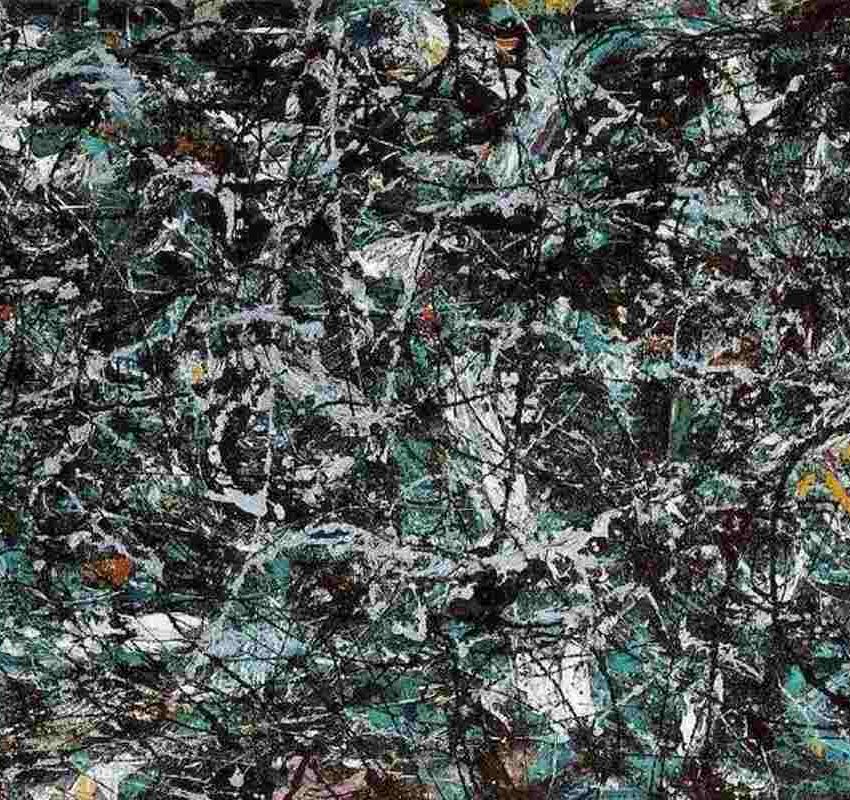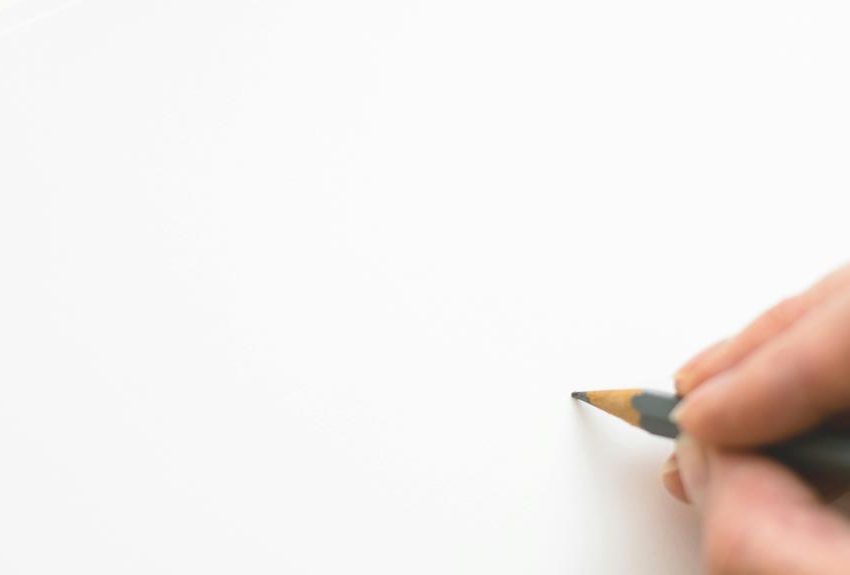Graffiti Art
From Urban Streets to Creative Canvases

Unleashing the Urban Canvas: The World of Graffiti Art
Graffiti art, born from the streets and alleyways, pulses with raw energy and unapologetic expression.
It’s more than just spray-painted symbols—it’s a subculture, a language of rebellion, and an ever-evolving art form.
While some view this type of art as antisocial behavior seeking attention or thrills, it’s also recognised as a medium for expressive artistry.
In this exploration, we delve into the history, techniques, and impact of this type of art art, from its illicit beginnings to its integration into contemporary culture.
What Is Graffiti Art?
Graffiti art, often associated with urban landscapes, involves the unauthorized marking of public spaces using spray paint, stencils, or other materials.
It’s a visual language that communicates defiance, identity, and creativity.
But beyond the stereotype of gang-related tags, graffiti encompasses a rich tapestry of styles, messages, and artistic visions.
A Brief History of Graffiti
The term “graffiti” derives from the Italian word “graffio,” meaning “scratch,” and its roots extend deep into history.
Evidence of graffiti-like markings has been discovered in ancient Roman ruins, Mayan sites such as Tikal, Spanish rocks dating back to the 16th century, and even within medieval English churches.
Ancient Origins
Graffiti isn’t a recent phenomenon. Ancient civilizations etched symbols and inscriptions on walls, rocks, and monuments.
From Roman ruins in Pompeii to Mayan temples and the Catacombs of Rome where names and protest poems were written on buildings.
These markings encapsulate the essence of human existence and cultural ethos.
20th Century Emergence
In the 20th century, it became closely associated with street gangs in major urban centres in the 20th century, street art became closely intertwined with gang culture in the United States and Europe.
Gangs utilized street art for various purposes, including territorial demarcation, commemoration of deceased members, boasting about criminal activities, and provoking rival factions.
The 1970s stand as a seminal era in the narrative of graffiti art, particularly within the context of its modern evolution.
This period witnessed the dawn of contemporary graffiti, notably in urban epicenters like New York City.
Amidst the backdrop of social and political turbulence, street art graffiti burgeoned into a vibrant form of expression, finding its canvas on the city’s subway trains.
These train cars, once mundane fixtures of public transportation, became dynamic galleries adorned with colourful and intricate murals, catalysing a cultural revolution.
Artists of the time, including luminaries like Taki 183, Dondi, and Phase 2, emerged as trailblazers, shaping the aesthetic and ethos of graffiti for generations to come.
Beyond mere acts of vandalism, street art in the 70s served as a potent voice for marginalised communities, articulating their struggles and aspirations amidst urban decay.
The styles and techniques cultivated during this epoch continue to reverberate through contemporary street art movements, underscoring the enduring legacy of the 70s in the rich tapestry of street art art history.
Tagging and Thrill Seeking
The 1990s saw the rise of “tagging”—repeated use of a single symbol to mark territory.
Taggers strategically placed their marks in central neighborhoods for maximum visibility.
Tagging, the act of inscribing one’s street art name using spray paint or markers, stands as one of the most contentious and scrutinized forms of self-expression.
Originating from the gritty streets of struggling neighbourhoods in New York City to the alleyways of suburban Australia, street art artists and the public alike remain divided regarding its artistic merit.
Despite the growing acceptance of street art and elaborate street art murals in contemporary society, tagging grapples with a significant image problem: it is often linked with gang activity, dismissed as mindless vandalism, and challenges conventional notions of property ownership.
Even within the graffiti subculture, tagging frequently takes a backseat to larger-scale murals or is mistaken for other forms of street art, such as throw-ups characterized by simple outlines and fills.
Moreover, for those unfamiliar with street art nuances, the distinction between tagging and other street art forms remains nebulous, further complicating discussions about its origins, motivations, and aesthetic appeal.
Such complexities make it challenging to engage in meaningful discourse about tagging, even among individuals receptive to alternative forms of expression.
Thus, the question persists: is our aversion to tagging ingrained through societal conditioning, or does tagging genuinely lack artistic significance?
Graffiti as Art: Breaking Stereotypes
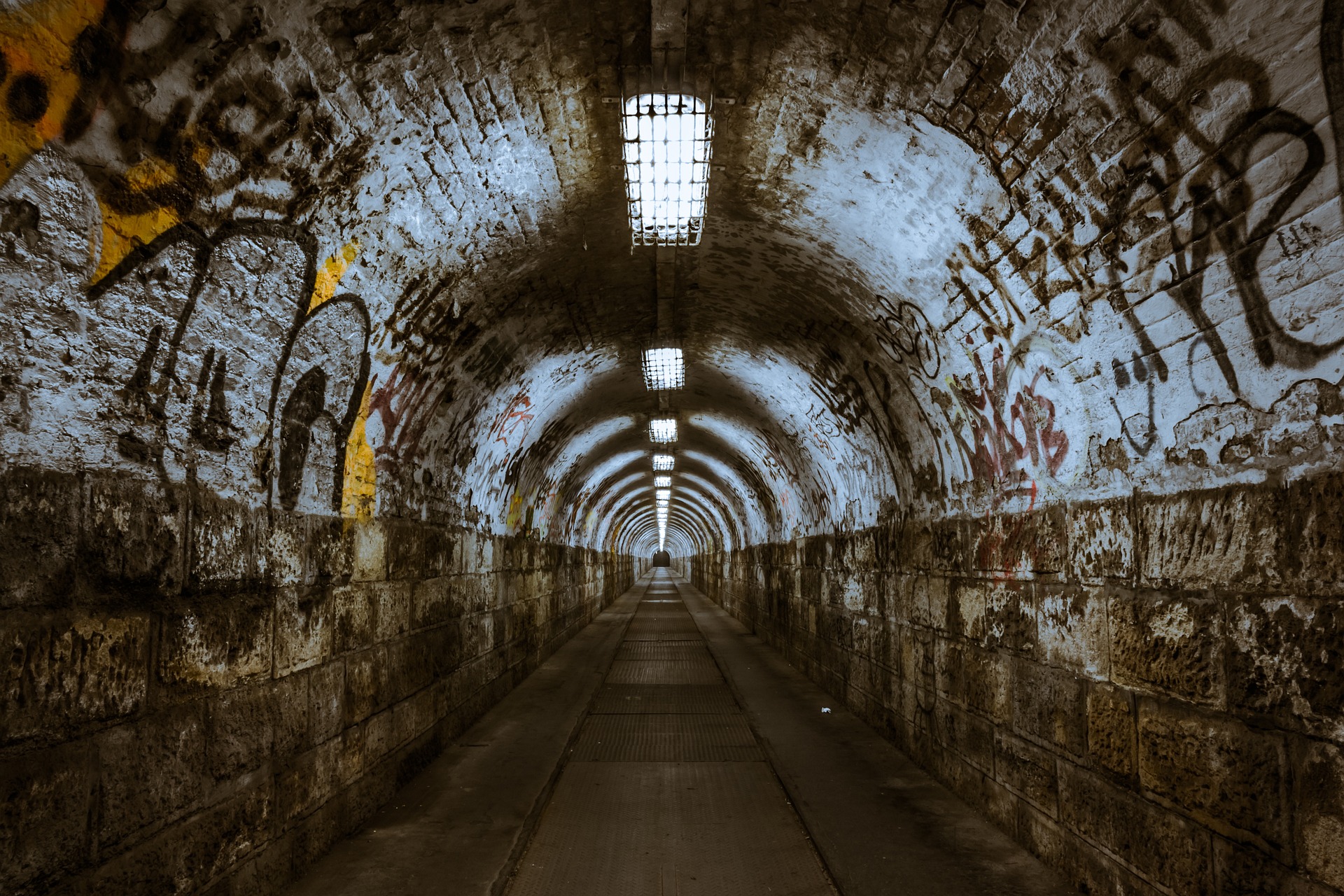
Public Art vs. Vandalism: Graffiti straddles a fine line. Some view it as antisocial behavior, while others see it as an expressive art form. The debate continues: Is it vandalism or public art?
Despite its association with delinquency, some observers perceive street art as a form of public art, akin to the murals commissioned by the U.S.
Works Progress Administration Federal Art Project during the Great Depression or the works of renowned muralist Diego Rivera in Mexico.
Just as these murals embellished neighbourhoods and resonated with specific communities, street art in many Hispanic neighbourhoods in the United States is viewed as intricate urban artistry.
However, the classification of graffiti and street art as either innovative art or public nuisance remains a subject of heated debate.
New York City emerged as a notorious epicenter of street art during the late 20th century, with elaborate multicoloured pieces adorning building walls and subway cars, reshaping the urban landscape.
The art world’s fascination with artists operating outside traditional gallery confines fueled interest in this form of self-expression.
In the 1980s, New York artists like Keith Haring and Jean-Michel Basquiat gained prominence for their graffiti work, subsequently transitioning into successful careers as gallery-represented painters.
Globally, jurisdictions have enacted laws to combat graffiti vandalism, with some countries implementing severe penalties. For instance, in Singapore, violators may face caning.
Throughout the 1980s and ’90s, many jurisdictions allocated significant resources to eradicate graffiti, fearing its adverse effects on community integrity.
However, some cities introduced initiatives such as mural programs or designated “free walls” to provide legal outlets for urban youths to channel their artistic creativity.
The New Wave
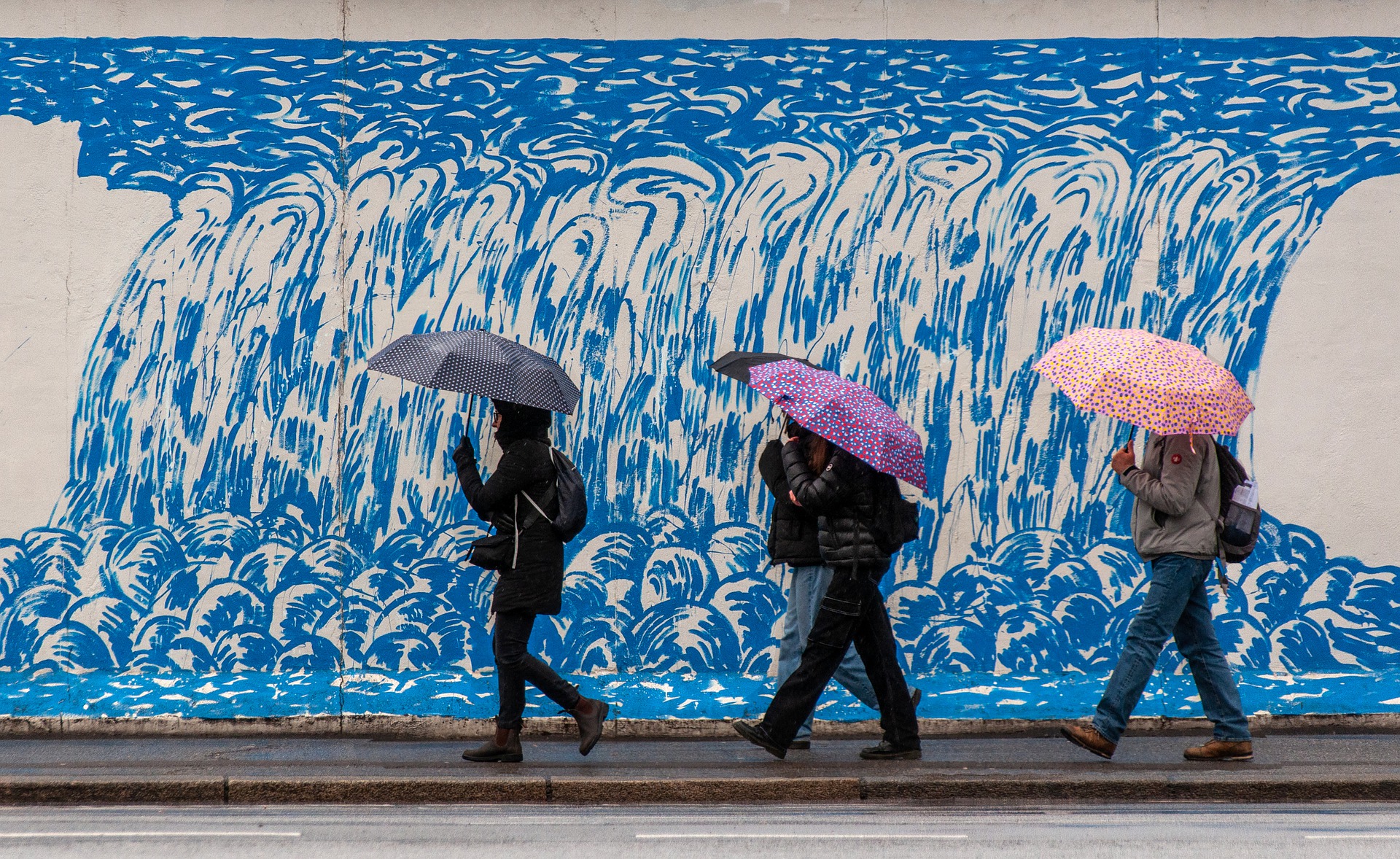
Contemporary graffiti artists challenge conventions
The emergence of contemporary graffiti artists represents a new wave of creativity within the genre, characterised by a fusion of traditional graffiti techniques with elements of fine art.
These artists challenge conventions by pushing the boundaries of what graffiti can be, transforming urban landscapes into dynamic galleries of expression.
Figures like Banksy, Jean-Michel Basquiat, and Keith Haring have played pivotal roles in elevating graffiti from the streets to gallery walls, garnering widespread recognition for their innovative approaches and impactful storytelling.
Banksy, known for his subversive stencils and thought-provoking social commentary, has redefined the possibilities of street art, blurring the lines between vandalism and high art.
Jean-Michel Basquiat’s graffiti-inspired paintings, infused with raw energy and symbolism, captured the essence of urban life and cultural identity.
Similarly, Keith Haring’s iconic murals, characterised by bold lines and vibrant colours, transcended traditional graffiti aesthetics, spreading messages of activism and unity.
Through their pioneering efforts, these artists have not only challenged the perception of graffiti as a form of vandalism but have also demonstrated its potential as a legitimate art form worthy of recognition and acclaim within the art world.
Styles and Techniques
Wildstyle
Wildstyle represents a sophisticated and intricate form of graffiti art, renowned for its complexity and intricate design.
It stands as one of the most intricate types of graffiti pieces, challenging even the most seasoned observers due to its elaborate composition and intricate lettering.
Drawing from traditional calligraphy, wildstyle graffiti transforms letters to such an extent that deciphering them becomes a daunting task for the uninitiated.
This intentional illegibility is often regarded as a hallmark of the style, adding to its mystique and allure.
Inspired by traditional calligraphic techniques, wildstyle graffiti exhibits partially abstract qualities, yet possesses distinct characteristics that define its form.
Letters are often exaggerated, featuring curves, overlaps, and interlocking elements that create a visually dynamic composition.
Arrows are a common motif within wildstyle pieces, serving to guide the viewer’s eye and suggest a sense of movement and flow.
Additionally, wildstyle compositions frequently incorporate vibrant colors, infusing the artwork with a sense of vitality and energy.
It’s also customary to integrate 3D elements, further enhancing the depth and visual impact of the piece.
Some compositions teeter on the edge of wildstyle, earning them the moniker of semi-wildstyle or semi-wild.
The term “wildstyle” gained prominence through the Wild Style street art crew, established by Tracy 168 of the Bronx, New York, in 1974, from which the style takes its name.
Its popularity surged throughout the 1980s, with Phase 2 also recognized as one of the early proponents of wildstyle.
As the Wild Style crew expanded its influence across New York City, the stylistic approach evolved, marking a significant chapter in the evolution of street art art.
Colour
Bright colours play a crucial role in the narrative of vibrant graffiti art, adding vibrancy and dynamism to its visual language.
In the context of the article, bright colors are emblematic of the energy and vitality inherent in street art, reflecting its unapologetic and expressive nature.
Graffiti artists often utilise a spectrum of bold and vivid hues to command attention and evoke emotions, whether it be through intricate murals adorning city walls or the vibrant tags scrawled across urban landscapes.
The use of bright colors in street art serves as a testament to the artist’s creativity and ingenuity, transforming mundane surfaces into captivating works of art.
Moreover, these colors contribute to the immersive experience of encountering graffiti in public spaces, imbuing urban environments with a sense of liveliness and excitement.
In essence, bright colors are an integral aspect of street art, enhancing its impact and allure as a dynamic form of visual expression.
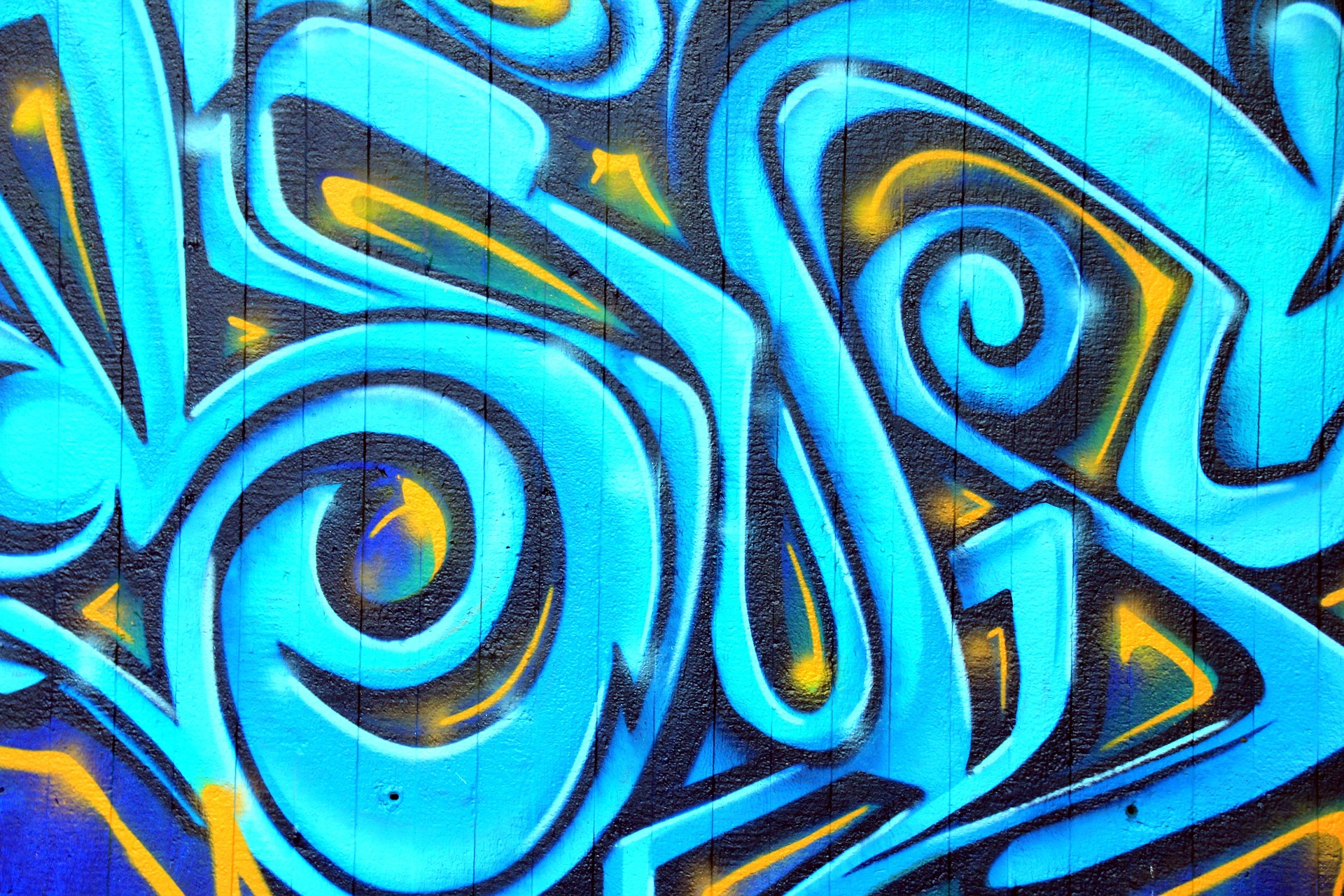
Tagging
Simple, repetitive signatures, tags, are the backbone of graffiti. They’re quick, bold, and often cryptic.
To the uninitiated, graffiti and tagging may appear synonymous.
Graffiti encompasses any form of writing or drawing created on a surface in a public space, whereas tagging specifically involves the artist inscribing their signature, pseudonym, or logo onto a public surface—a distinct signature known as a “tag,” with the artist colloquially referred to as a “tagger.”
Tagging, being the original and simplest form of street art, remains the most prevalent and is observed in cities worldwide.
While graffiti may seem like a modern phenomenon emerging in the 20th century, tagging in its basic form has roots tracing back centuries.
Even in ancient Greek and Roman times, individuals commonly painted or etched their names onto the surfaces of public buildings, with traces of this ancient graffiti still visible on historical structures today.
However, it was not until the 1960s that graffiti pioneers laid the groundwork for the street art culture recognized today.
Figures like Cornbread and other youths in New York and Philadelphia began tagging their names on public surfaces, with the locations for these tags growing increasingly inventive and challenging to access as tagging culture matured.
Taggers continually sought to outdo each other, either by tagging over existing works or by tagging in unconventional spaces.
Throughout the 1970s and 1980s, subway trains emerged as prime canvases for taggers, becoming so inundated with graffiti tags that visibility through the windows became obscured.
The spectrum of graffiti encompasses various styles, with tagging being just one subset.
While tagging primarily focuses on the artist’s name or signature, graffiti encompasses a broader range of expressions, including graphic designs, images, stickers, poster graffiti, stencilled art, and even urban knitting.
Stencils and Murals
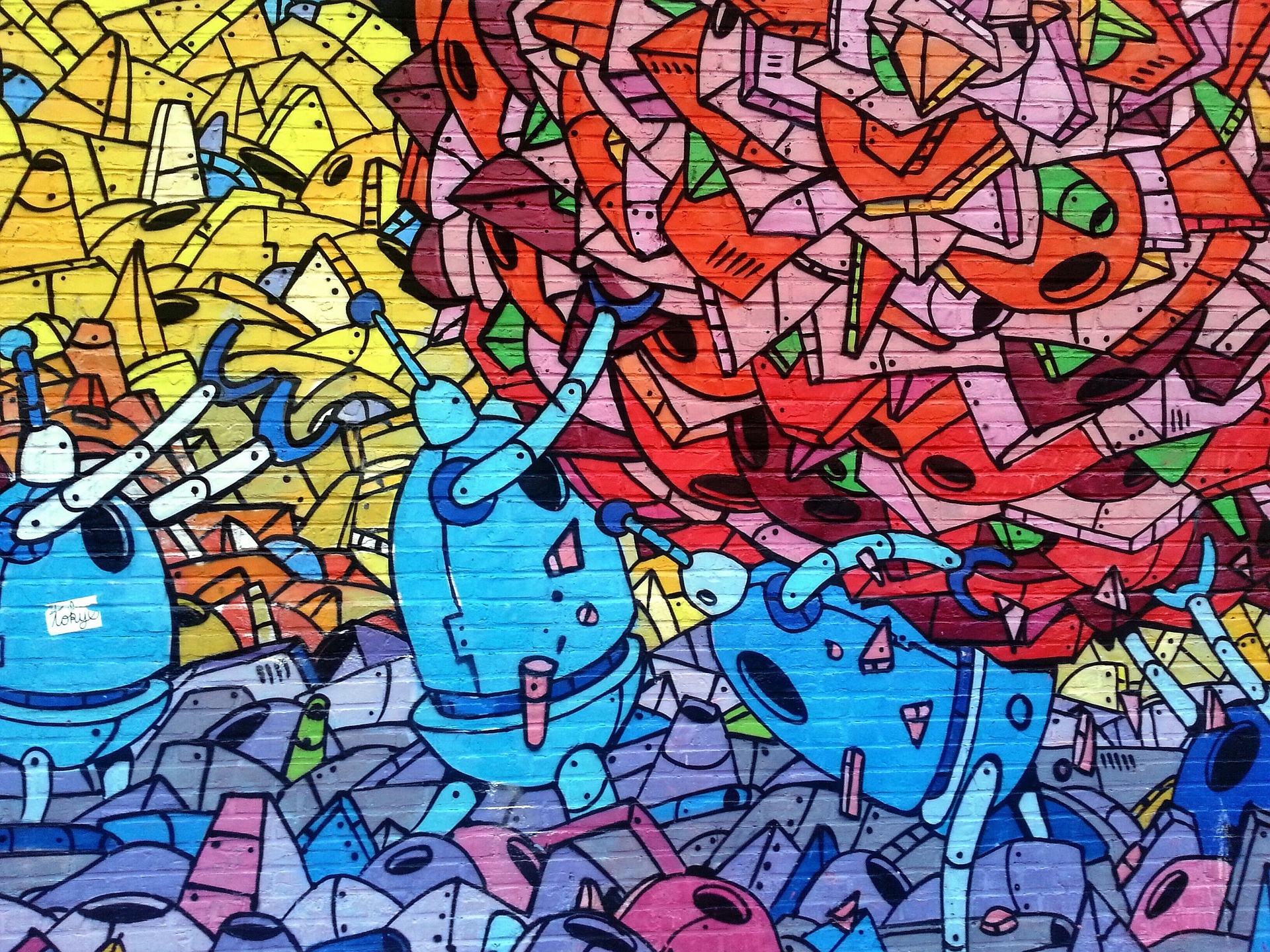
The best example of stencils and murals in graffiti can be explored through Banksy.
In the ever-evolving realm of contemporary art, few figures have garnered as much intrigue and reverence from art aficionados worldwide as Banksy.
This enigmatic street artist, hailing from Bristol and veiled in anonymity, has carved out a remarkable legacy through his provocative and visually arresting works.
With the urban landscape as his canvas and social critique as his tool, Banksy has sparked dialogue, challenged conventions, and indelibly shaped the cultural fabric.
While Banksy’s identity remains shrouded, his impact is unmistakable.
Many recognize Banksy as a graffiti artist, yet the specifics of his artistic method and the defining traits of his unique style are often questioned.
At the heart of Banksy’s technique lies stenciling—an intricate process through which he swiftly reproduces designs on urban surfaces.
His aesthetic is characterized by satirical imagery infused with poignant social commentary, layered to evoke depth and complexity.
Employing a monochromatic palette and textured elements, Banksy enhances the narrative power of his creations, ensuring that each piece serves as both a visual spectacle and a profound reflection on contemporary society.
On the other hand, Mural painting, commonly intertwined with graffiti, manifests as expansive artworks embellishing buildings and walls.
These larger-than-life creations possess the remarkable ability to metamorphose urban environments, weaving narratives and imparting impactful messages.
Mural painting and Graffiti wall art are much the same in transforming cityscapes into vibrant galleries.
Artists utilise walls as expansive canvases, crafting vivid and detailed compositions that enhance the visual character of neighbourhoods and urban landscapes.
As the recognition of graffiti expands, numerous cities have begun designating legal walls or granting permits for artists to craft murals in designated zones.
This transition has fostered the flourishing of a dynamic street art scene, all while upholding respect for both public and private property.
Urban Culture and Beyond
Graffiti and Hip-Hop: Graffiti and hip-hop share roots.
Both emerged from marginalized communities, using creativity as a form of resistance and expression.
Hip-hop culture, a vibrant and influential movement, has been shaped by an array of artistic expressions, spanning rap music, breakdancing, DJing, and graffiti art.
In this article, we explore the profound impact of graffiti on the evolution of hip-hop culture, tracing its journey from an underground phenomenon to a revered form of artistic expression.
Graffiti art was intricately intertwined with the genesis of hip-hop culture.
Emerging from the same neighborhoods that gave rise to DJing and MCing (rap), graffiti became an integral component of a cultural movement epitomizing creativity and self-expression.
As hip-hop music gained traction in the 1980s, graffiti seamlessly found its way into music videos and album covers.
Renowned artists such as Run-D.M.C. and The Beastie Boys prominently featured graffiti art in their visuals, solidifying their position within hip-hop culture.
The influence of graffiti transcended the boundaries of New York City, resonating with artists worldwide who embraced the art form, infusing it with their cultural nuances and interpretations.
This global embrace of graffiti played a pivotal role in disseminating hip-hop culture across the globe.
In the contemporary hip-hop landscape, graffiti remains a cherished and integral aspect of the culture.
Esteemed artists like Jay-Z and Kanye West openly express their admiration for graffiti art, seamlessly incorporating it into their music and visual aesthetics.
The impact of graffiti on hip-hop culture is undeniable.
Originating as an act of rebellion and self-expression on the streets of New York City, graffiti has evolved into a dynamic global art movement.
Its intricate designs, social commentary, and symbiotic relationship with music have solidified its place within hip-hop culture, shaping its visual identity and honouring its roots in the urban milieu.
Graffiti stands as a testament to the enduring influence of hip-hop, showcasing the power of creativity, resilience, and artistic expression in shaping our world
Legal Walls and Festivals
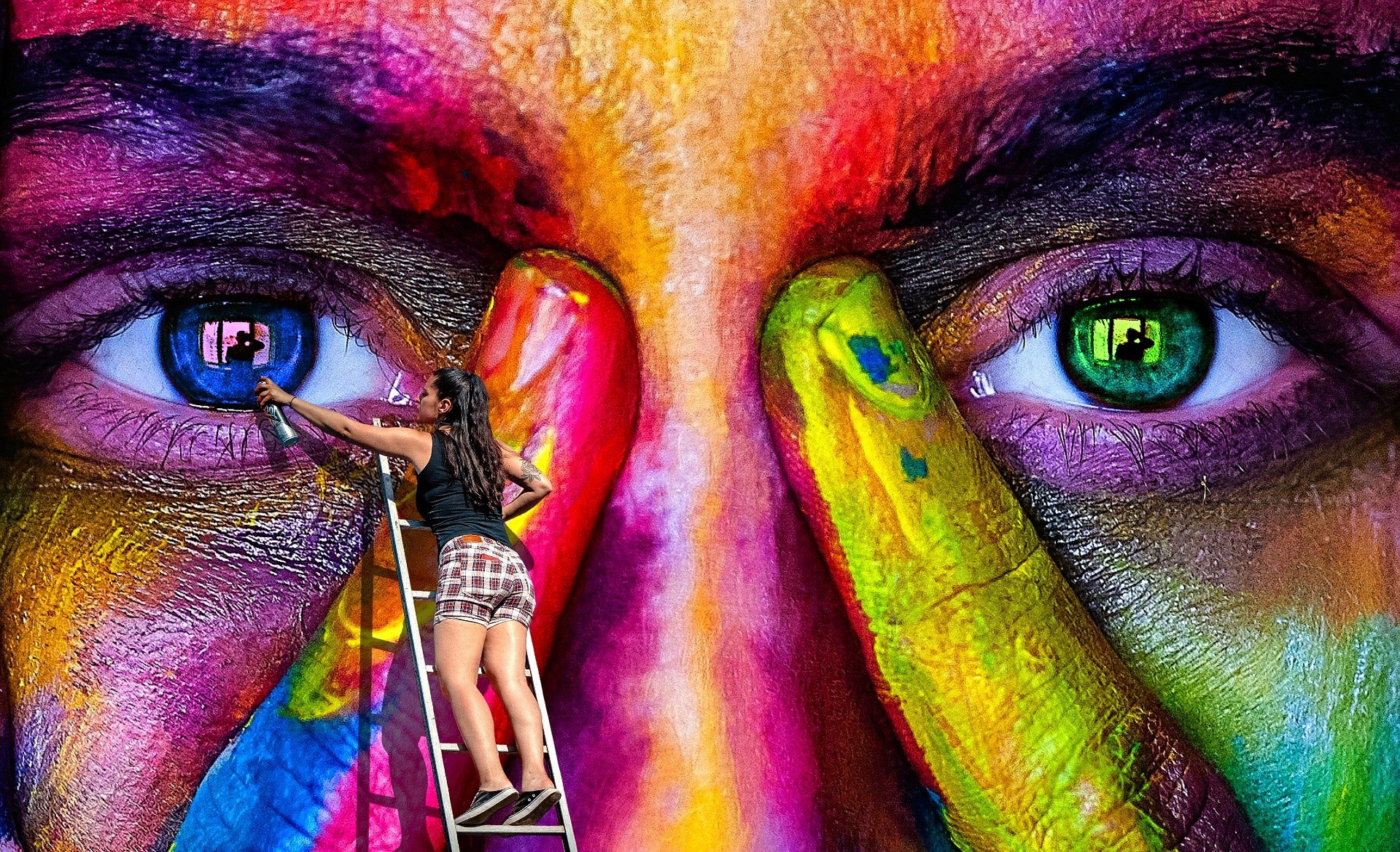
Festivals celebrate this art form, inviting artists to create large-scale murals in public spaces.
In September 2020, London witnessed a remarkable event as murals began appearing across the cityscape each day, seemingly conjured by magic.
Yet, behind this enchanting display lay the hands of dedicated individuals.
Over 200 artists from various corners of the globe converged on London to participate in the inaugural London Mural Festival (LMF).
Legal Walls
The term “Legal Wall” originated from the property owner granting permission for graffiti artists to use the walls for their artwork, with the stipulation that they remained within the designated boundaries and refrained from extending their drawings onto neighboring properties.
Cities all over the world have now designate legal walls for graffiti artists.
For example, The Snösätra neighbourhood in Rågsved, Stockholm, formerly an abandoned industrial area, has undergone a remarkable metamorphosis into a graffiti haven.
Property owners granted permission for the once-gray, dilapidated walls to be adorned with vibrant graffiti, illuminating the surroundings and drawing attention from both locals and visitors to this once-overlooked community.
Check with your local council to find out where the legal walls are near you.
Festivals
Festivals celebrate this art form, inviting artists to create large-scale murals in public spaces.
In recent years, mural festivals have surged in popularity worldwide, serving as dynamic platforms that unite street artists from diverse backgrounds to craft expansive public art installations.
The proliferation of these festivals mirrors the escalating fascination with urban art and the pressing need to rejuvenate public spaces into lively, creative hubs.
Culturally, mural festivals serve as poignant showcases for local artists, fostering a sense of communal pride.
Moreover, from an economic standpoint, they inject vitality into local economies and bolster tourism.
Below, we delve into the inception and evolution of mural festivals:
Originating in the 1970s in Philadelphia, mural festivals emerged as a strategic initiative by the city government to combat graffiti by commissioning artists to adorn city buildings with murals.
This endeavor not only curbed graffiti but also enhanced the city’s aesthetic appeal.
Over time, mural festivals transcended their local roots to become global phenomena, spotlighting the works of both local talents and international luminaries.
The inaugural international mural festival, Meeting of Styles, convened in Germany in 1997, paving the way for countless similar events worldwide.
Beyond mere art exhibitions, mural festivals actively engage communities through workshops and discussions, offering visitors insight into the artistry and narratives behind the murals.
For instance, the Vancouver Mural Festival integrates artist talks, guided tours, and educational workshops, fostering deeper connections between artists and spectators.
Economically, mural festivals wield substantial influence on local economies.
Research from the Montreal Economic Institute reveals that Montreal’s annual Mural Festival generates approximately $13.5 million CAD in economic benefits, driven by heightened tourist spending, job creation, and enhanced property values.
Crucially, mural festivals enable the creation of public art that authentically reflects the identity of the community.
For example, In September 2020, London witnessed a remarkable event as murals began appearing across the cityscape each day, seemingly conjured by magic.
Yet, behind this enchanting display lay the hands of dedicated individuals.
Over 200 artists from various corners of the globe converged on London to participate in the inaugural London Mural Festival (LMF).
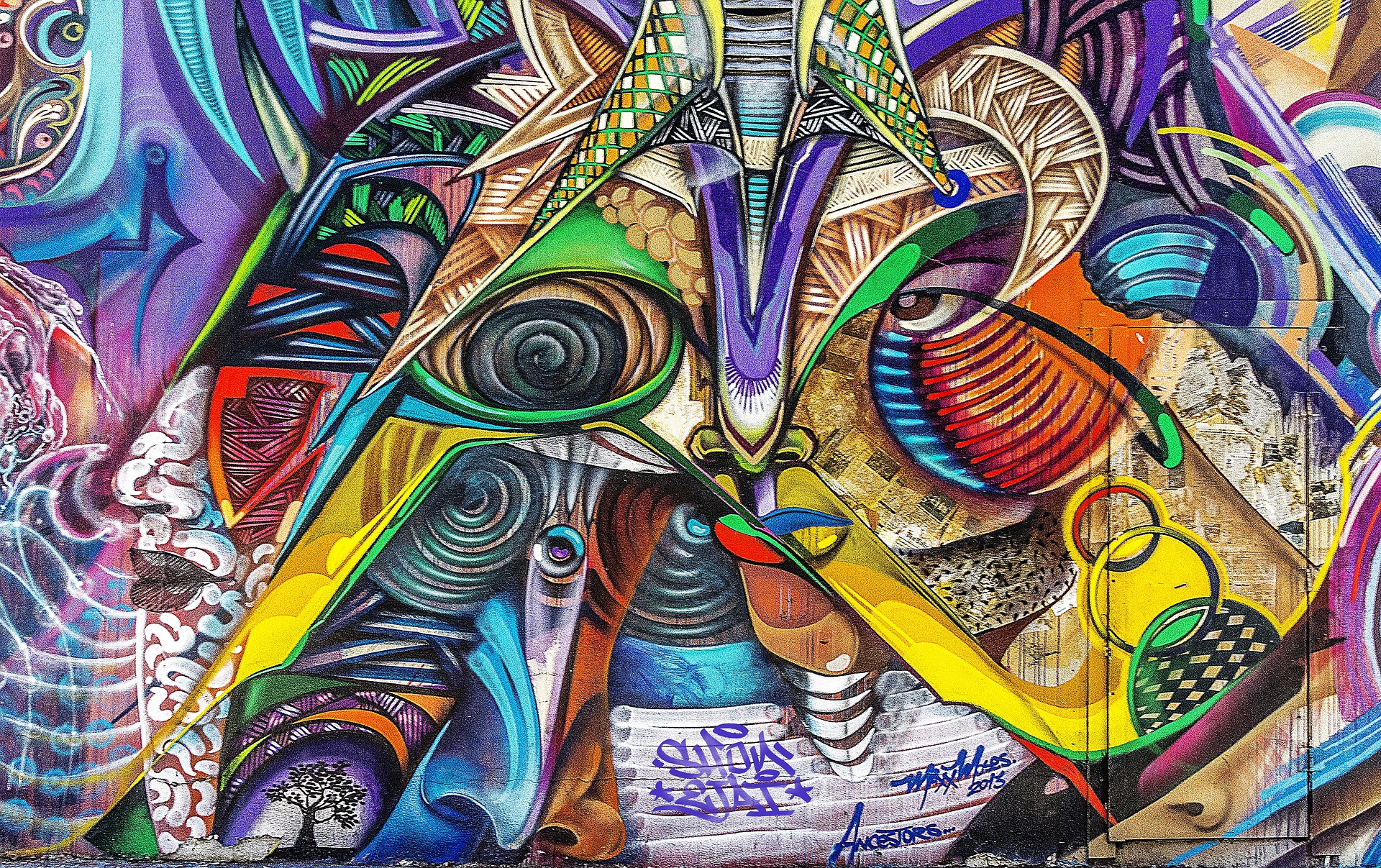
Pop Art & Graffiti Street Art
Pop art seamlessly intersects with graffiti art, forming a dynamic fusion of styles and cultural influences.
Graffiti artists draw inspiration from pop art’s bold colors, graphic imagery, and incorporation of popular culture elements, infusing their compositions with recognizable symbols and characters.
Much like pop art, graffiti art serves as a commentary on consumerism and mass media culture, challenging societal norms and questioning the commodification of art.
This connection is further evident in the street art movement, where artists like Banksy and Shepard Fairey blend pop art elements with graffiti techniques to create impactful works in public spaces.
Both movements share a connection to urban environments and street culture, utilising city landscapes as their canvases to transform mundane surfaces into vibrant showcases of artistic expression.
In essence, the integration of pop art into graffiti art enriches the visual storytelling and social commentary within the contemporary art landscape.
Renaissance & Graffiti
Though seemingly disparate, the Renaissance period and the pop art movement share intriguing connections and influences.
Both epochs were characterized by significant artistic innovation, with the Renaissance pushing the boundaries of realism and perspective while pop artists challenged traditional conventions through the incorporation of everyday objects and popular culture imagery.
Despite differing cultural contexts—the Renaissance marked by a revival of classical learning and humanism, while pop art emerged amidst the rise of consumer culture and mass media—both movements sought to engage with and reflect the societies in which they thrived.
While Renaissance art focused on religious and mythological themes, pop art embraced imagery from advertising and mass media, yet both aimed to capture the essence of their respective eras.
The lasting legacies of both periods continue to shape contemporary art, underscoring their enduring impact on artistic innovation and expression.
Art Prints and Banksy
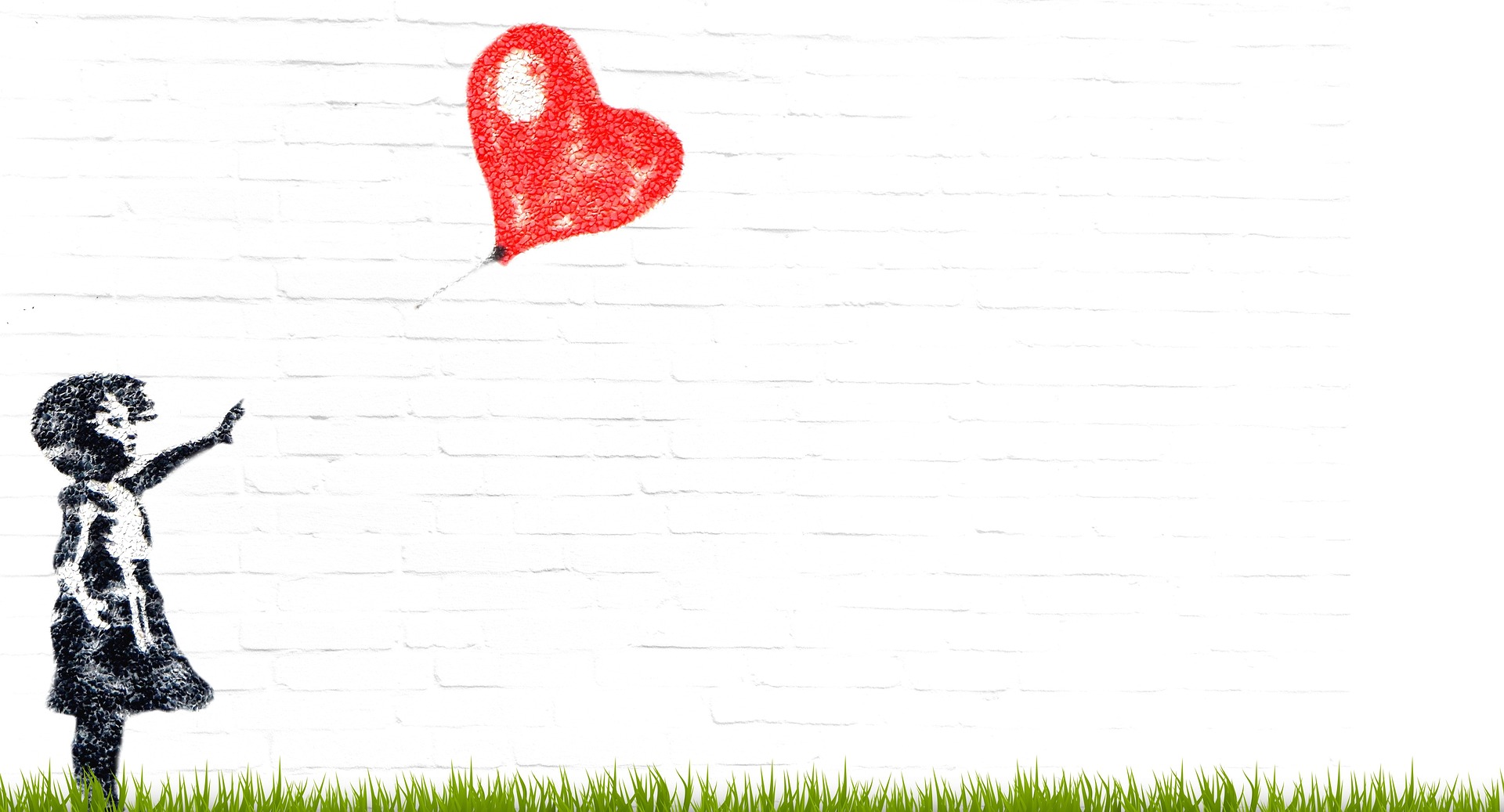
The accessibility of graffiti art has expanded with the availability of art graffiti prints and graffiti canvas art print, allowing enthusiasts to enjoy the vibrant colors and bold statements in their own homes by adding to their home decor or even to give to family and friends as they are said to make the best gifts.
Banksy’s works, often reproduced as limited edition prints, have garnered significant attention in the art world, becoming sought-after pieces for collectors and admirers alike.
One of his most famous works are Girl with love balloon and Love Rat Bringing graffiti art into the home as been a great way for people to become more accepting to the medium.
Banksy’s accessible art collection doesn’t stop there. Published in 2005 by Century, Banksy’s fourth book, “Wall and Piece,” presents readers with a vibrant assemblage of stencil art, graffiti, quotes, and commentary.
Within its pages, readers encounter a captivating exhibition of Banksy’s work, including notable pieces showcased at the Tate Gallery.
Whether it is framed canvas wall art, entire room wall, print wall or a publication, artists like Banksy are continuing to bring graffiti art into the heart of our minds and homes.
Nike Jordan
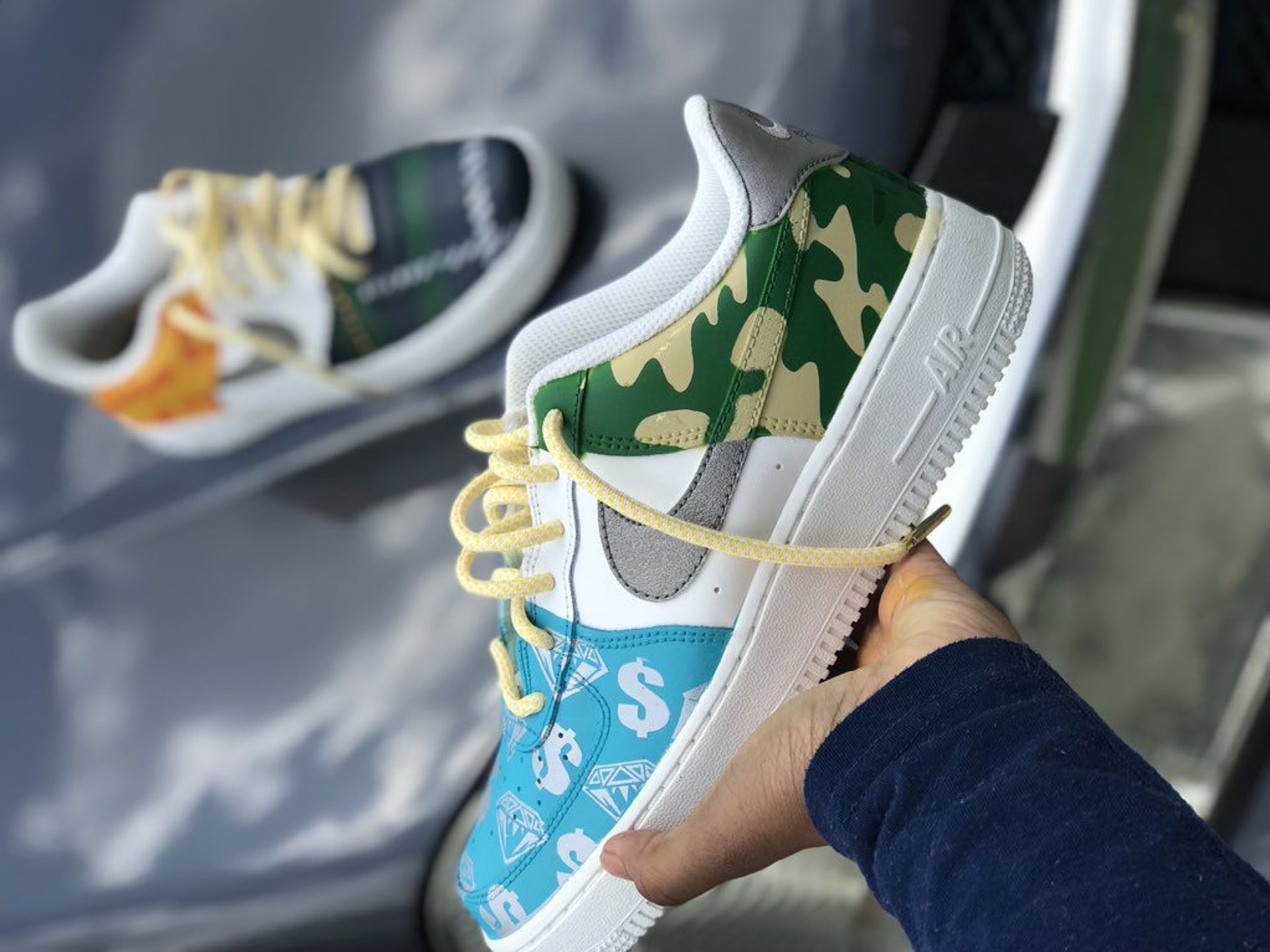
The Black Nike Jordan Graffiti Style Canvas Art serves as a contemporary manifestation of graffiti art within the realm of urban culture and street art.
This artwork embodies the fusion of traditional graffiti techniques with elements of modern popular culture, specifically through its depiction of the iconic Nike Jordan brand.
By incorporating imagery from streetwear and sneaker culture, this piece resonates with audiences familiar with urban lifestyles and fashion trends.
Furthermore, the use of graffiti-style elements, such as bold lines, vibrant colors, and dynamic compositions, pays homage to the rich history and aesthetic of graffiti art.
In this way, the Black Nike Jordan Graffiti Style Canvas Art contributes to the ongoing dialogue surrounding graffiti art’s evolution and its integration into mainstream culture.
conclusion
Graffiti transcends mere spray paint; it embodies a rebellious language of creativity that echoes through the ages.
From ancient inscriptions etched into historical monuments to modern-day murals adorning urban landscapes, graffiti has woven itself into the fabric of human expression across centuries.
Whether scrawled hastily on subway trains or meticulously crafted on gallery walls, graffiti art imprints itself onto the collective consciousness, leaving an enduring impression.
As you navigate the streets, remain vigilant for these clandestine messages—they serve as whispers from urban storytellers, silently narrating tales of defiance and ingenuity.

